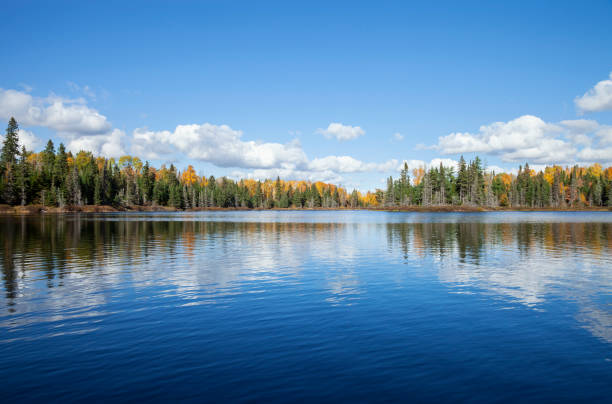


It surprises most people outside the American West to learn that fully one-third of the nation’s land mass is owned by the federal government. It is much more than that in some states: over 80% of Nevada is federally owned as is over 60% of Alaska, Idaho, and Utah. Even in Western states where federal landownership is 50% or less, federal lands may comprise 70%, 80%, and 90% of rural counties.
Setting aside the lengthy and complex constitutional, statutory, and historical process that got us to this point and whether, on a grand scale, we should change that ownership pattern, one question worthy of concern given current events is whether, on a case-by-case basis, we should dispose of or sell any of that federal land? Specifically at issue are the 245 million acres of land — 10% of the nation’s land — overseen by the Bureau of Land Management from within the Department of the Interior. Thus, not subject to discussion are the national parks or “pleasuring-ground[s] for the benefit and enjoyment of the people” (80 million acres), congressionally designed wilderness areas “where man himself is a visitor who does not remain” (112 million acres), and national monuments established by Congress or by presidential edict that protect and preserve “archeological sites, historic landmarks, historic and prehistoric structures, and other objects of historic or scientific interest” (19 million acres).
Although the Forest Service in the Department of Agriculture manages 193 million acres compared to the BLM’s 245 million acres, its lands were set aside specifically, early on via presidential decree and then designated by Congress as national forests to promote water resources, for timber harvesting, and, later, recreation. Since 1960, Forest Service lands have been managed by federal law for “multiple use and sustained yield,” as have BLM lands, which include mining, grazing, oil and gas, and recreation, among others. It is worth noting that the Biden administration has ended “multiple use” of most BLM lands in favor of preservation, which has drawn lawsuits from Western attorneys general.
Unlike Forest Service land, BLM lands comprise a hodgepodge of remainder land that was not designated specifically by Congress, not transferred through federal land acquisition statutes, such as the Homestead Act and General Mining Act of 1872, and thus left over when Congress ended the land disposal era with passage of the Federal Land Policy and Management Act. One example of such BLM lands is the checkerboard tracts intermingled with private land across southern Wyoming, the subject of public access litigation argued at the U.S. Court of Appeals for the 10th Circuit in Denver, Colorado, last May.
Like those largely inaccessible tracts in Wyoming, the BLM is saddled with millions of acres of land that are isolated, difficult to access, expensive to manage, and not supportive of the purpose for which they were acquired or retained. Congress recognized that fact in 1976 when it passed FLPMA, also known as the BLM Organic Act. Thus, during its land-use management process, the BLM may identify such tracts if they “serve important public objectives, including but not limited to, expansion of communities and economic development” for sale at fair market value. A planned sale of more than 2,500 acres must be submitted to Congress, which may veto the proposal. Yet another federal law permits the BLM to sell qualified tracts from the land-use planning process but allows retention of the proceeds of those sales to acquire nonfederal lands, “specifically inholdings, lands adjacent to federal lands that contain exceptional resources, and areas adjacent to inaccessible lands that are open to recreation.”
Surprisingly, in late February, Rep. Ryan Zinke (R-MT), secretary of the interior under former President Donald Trump, introduced bipartisan legislation to restrict the federal government’s authority to dispose of its lands, “Public lands must remain public, and the federal government has a responsibility to manage and ensure access to those lands.” Because his bill is limited to tracts larger than 300 acres that are “publicly accessible via road, trail, easement or waterway,” and includes a dozen exclusions, how it will affect the BLM’s existing land disposal authority is unknown.
Days after Zinke’s announcement, Gov. Joe Lombardo (R-NV) struck the opposite tone with a letter to President Joe Biden demanding the Biden administration “release” federal land to permit more housing development in a state where 85% of the land is owned by the federal government. Ninety percent of Clark County, home to Las Vegas and nearly three-quarters of Nevada’s residents, is owned by the federal government, almost all by the BLM.
The hardship such a lopsided federal/private landowners pattern imposed on Nevada has long been recognized. In 1980, the Santini-Burton Act authorized disposal of vast acreage in Clark County to permit Las Vegas to grow, the proceeds from which was used for land conservation projects. That program was expanded greatly with enactment in 1998 of the Southern Nevada Public Land Management Act. Over two and a half decades, SNPLMA generated over $4 billion in revenue for conservation and public service projects and permitted privately owned land to sustain homes, schools, and businesses. Nonetheless, logjams remain.
Hence, Lombardo demanded Biden slash “bureaucratic red tape” to address the housing crisis that is facing Nevada, its local communities, and residents. “The federal process for privatizing land for development is too slow, too complex, and contributes to higher costs for Nevada families seeking homeownership.” As bad as the Biden housing crisis is nationwide, as “Bidenomics” prices young people out of homeownership, how much worse must it be in Nevada where almost no private land is available to the public?
CLICK HERE TO READ MORE FROM THE WASHINGTON EXAMINER
Last year, Trump recognized the situation with his call for 10 “freedom cities” on undeveloped federal land: “These freedom cities will reopen the frontier, reignite American imagination, and give hundreds of thousands of young people and other people, all hardworking families, a new shot at homeownership and in fact, the American dream.”
That certainly must be music to the ears of Lombardo, Nevadans, and other Westerners who find their way to a better future impeded unnecessarily by vast swaths of federal land largely unused, unnecessary, and exorbitantly expensive to maintain. Moreover, I don’t think Zinke will object. After all, his bill recognizes the success of the Nevada land sale laws and exempts them from his ban on federal land sales.
Mr. Pendley, a Wyoming attorney and Colorado-based, public-interest lawyer for three decades with victories at the Supreme Court of the United States, served in the Reagan administration and led the Bureau of Land Management for former President Donald Trump.
